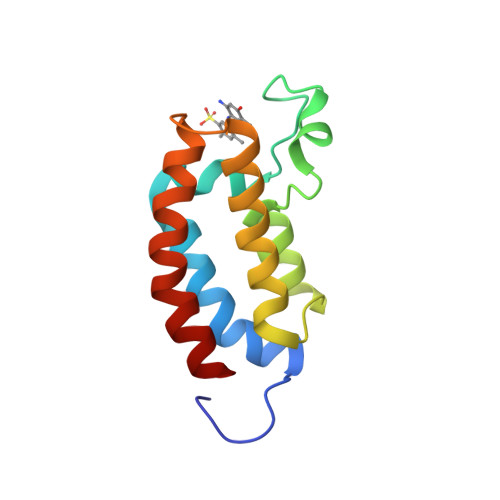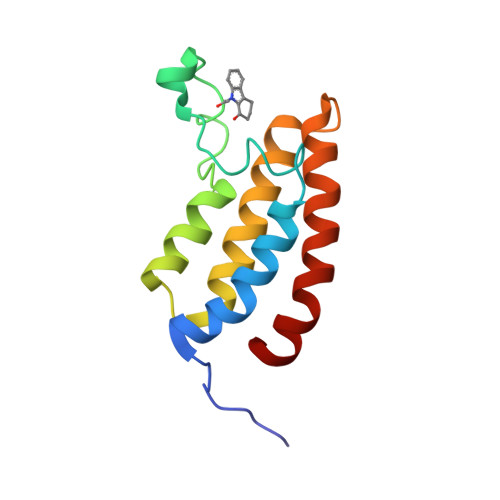GtoPdb is requesting financial support from commercial users. Please see our sustainability page for more information.
CREB binding lysine acetyltransferase
Target id: 2734
Nomenclature: CREB binding lysine acetyltransferase
Contents:
Gene and Protein Information  |
||||||
| Species | TM | AA | Chromosomal Location | Gene Symbol | Gene Name | Reference |
| Human | - | 2442 | 16p13.3 | CREBBP | CREB binding lysine acetyltransferase | |
| Mouse | - | 2441 | 16 A1 | Crebbp | CREB binding protein | |
| Rat | - | 2444 | 10q12 | Crebbp | CREB binding protein | |
Previous and Unofficial Names  |
| CREB binding protein | RSTS | Rubinstein-Taybi syndrome |
Database Links  |
|
| Alphafold | Q92793 (Hs) |
| CATH/Gene3D | 1.10.1630.10, 1.20.1020.10, 1.20.920.10 |
| ChEMBL Target | CHEMBL5747 (Hs) |
| Ensembl Gene | ENSG00000005339 (Hs), ENSMUSG00000022521 (Mm), ENSRNOG00000005330 (Rn) |
| Entrez Gene | 1387 (Hs), 12914 (Mm), 54244 (Rn) |
| Human Protein Atlas | ENSG00000005339 (Hs) |
| KEGG Gene | hsa:1387 (Hs), mmu:12914 (Mm), rno:54244 (Rn) |
| OMIM | 600140 (Hs) |
| Pharos | Q92793 (Hs) |
| RefSeq Nucleotide | NM_004380 (Hs), NM_001025432 (Mm), NM_133381 (Rn) |
| RefSeq Protein | NP_004371 (Hs), NP_001020603 (Mm), NP_596872 (Rn) |
| SynPHARM |
79896 (in complex with ischemin) 79941 (in complex with SGC-CBP30) |
| UniProtKB | Q92793 (Hs) |
| Wikipedia | CREBBP (Hs) |
Selected 3D Structures  |
|||||||||||||

|
|
||||||||||||

|
|
||||||||||||

|
|
||||||||||||
Download all structure-activity data for this target as a CSV file 
| Activators | |||||||||||||||||||||||||||||||||||||||||||||||||||
| Key to terms and symbols | View all chemical structures | Click column headers to sort | |||||||||||||||||||||||||||||||||||||||||||||||||
|
|||||||||||||||||||||||||||||||||||||||||||||||||||
| Inhibitors | |||||||||||||||||||||||||||||||||||||||||||||||||||||||||||||||||||||||||||||||||||||||||||||||||||||||||||||||||||||||||||||||||||||||||||||||||||||||||||||||||||||||||||||||||||||||||||||||||||||||||||||||||||
| Key to terms and symbols | View all chemical structures | Click column headers to sort | |||||||||||||||||||||||||||||||||||||||||||||||||||||||||||||||||||||||||||||||||||||||||||||||||||||||||||||||||||||||||||||||||||||||||||||||||||||||||||||||||||||||||||||||||||||||||||||||||||||||||||||||||
|
|||||||||||||||||||||||||||||||||||||||||||||||||||||||||||||||||||||||||||||||||||||||||||||||||||||||||||||||||||||||||||||||||||||||||||||||||||||||||||||||||||||||||||||||||||||||||||||||||||||||||||||||||||
| Other Binding Ligands | |||||||||||||||||||||||||||||||||||||||||||||||||||||||||||||||||||||||||||||||||||
| Key to terms and symbols | Click column headers to sort | ||||||||||||||||||||||||||||||||||||||||||||||||||||||||||||||||||||||||||||||||||
|
|||||||||||||||||||||||||||||||||||||||||||||||||||||||||||||||||||||||||||||||||||
| Immunopharmacology Comments |
| CBP30, a selective CBP/p300 bromodomain inhibitor, suppresses human Th17 responses. PMID: 26261308 |
| Immuno Process Associations | |||||||||
|
|||||||||
|
|||||||||
|
Clinically-Relevant Mutations and Pathophysiology 
|
||||||||||||||
|
||||||||||||||
|
||||||||||||||
|
||||||||||||||
References
1. Borah JC, Mujtaba S, Karakikes I, Zeng L, Muller M, Patel J, Moshkina N, Morohashi K, Zhang W, Gerona-Navarro G et al.. (2011) A small molecule binding to the coactivator CREB-binding protein blocks apoptosis in cardiomyocytes. Chem Biol, 18 (4): 531-41. [PMID:21513889]
2. Chatterjee S, Mizar P, Cassel R, Neidl R, Selvi BR, Mohankrishna DV, Vedamurthy BM, Schneider A, Bousiges O, Mathis C et al.. (2013) A novel activator of CBP/p300 acetyltransferases promotes neurogenesis and extends memory duration in adult mice. J Neurosci, 33 (26): 10698-712. [PMID:23804093]
3. Chen Z, Wang M, Wu D, Bai L, Xu T, Metwally H, Wang Y, McEachern D, Zhao L, Li R et al.. (2024) Discovery of CBPD-268 as an Exceptionally Potent and Orally Efficacious CBP/p300 PROTAC Degrader Capable of Achieving Tumor Regression. J Med Chem, 67 (7): 5275-5304. [PMID:38477974]
4. Chen Z, Wang M, Wu D, Zhao L, Metwally H, Jiang W, Wang Y, Bai L, McEachern D, Luo J et al.. (2024) Discovery of CBPD-409 as a Highly Potent, Selective, and Orally Efficacious CBP/p300 PROTAC Degrader for the Treatment of Advanced Prostate Cancer. J Med Chem, 67 (7): 5351-5372. [PMID:38530938]
5. Fedorov O, Lingard H, Wells C, Monteiro OP, Picaud S, Keates T, Yapp C, Philpott M, Martin SJ, Felletar I et al.. (2014) [1,2,4]triazolo[4,3-a]phthalazines: inhibitors of diverse bromodomains. J Med Chem, 57 (2): 462-76. [PMID:24313754]
6. Gallenkamp D, Gelato KA, Haendler B, Weinmann H. (2014) Bromodomains and their pharmacological inhibitors. ChemMedChem, 9 (3): 438-64. [PMID:24497428]
7. Romero FA, Murray J, Lai KW, Tsui V, Albrecht BK, An L, Beresini MH, de Leon Boenig G, Bronner SM, Chan EW et al.. (2017) GNE-781, A Highly Advanced Potent and Selective Bromodomain Inhibitor of Cyclic Adenosine Monophosphate Response Element Binding Protein, Binding Protein (CBP). J Med Chem, 60 (22): 9162-9183. [PMID:28892380]
8. Sachchidanand, Resnick-Silverman L, Yan S, Mutjaba S, Liu WJ, Zeng L, Manfredi JJ, Zhou MM. (2006) Target structure-based discovery of small molecules that block human p53 and CREB binding protein association. Chem Biol, 13 (1): 81-90. [PMID:16426974]
9. SGC. I-CBP112 A CREBBP/EP300-selective chemical probe. Accessed on 04/08/2023. Modified on 04/08/2023. thesgc.org, https://www.thesgc.org/chemical-probes/I-CBP112
10. Welti J, Sharp A, Brooks N, Yuan W, McNair C, Chand SN, Pal A, Figueiredo I, Riisnaes R, Gurel B et al.. (2021) Targeting the p300/CBP Axis in Lethal Prostate Cancer. Cancer Discov, 11 (5): 1118-1137. [PMID:33431496]
11. Xiang Q, Wang C, Wu T, Zhang C, Hu Q, Luo G, Hu J, Zhuang X, Zou L, Shen H et al.. (2022) Design, Synthesis, and Biological Evaluation of 1-(Indolizin-3-yl)ethan-1-ones as CBP Bromodomain Inhibitors for the Treatment of Prostate Cancer. J Med Chem, 65 (1): 785-810. [PMID:34962793]
How to cite this page
Non-enzymatic BRD containing proteins: CREB binding lysine acetyltransferase. Last modified on 16/06/2025. Accessed on 05/07/2025. IUPHAR/BPS Guide to PHARMACOLOGY, https://www.guidetomalariapharmacology.org/GRAC/ObjectDisplayForward?objectId=2734.












